-

Sep
26
Washington Roundup - September 2024
.png?sfvrsn=c1d454d1_1)
With the fiscal year coming to an end on September 30th, Congress has limited time to pass stopgap legislation to avert a government shutdown. While there is broad recognition that a continuing resolution is needed, there are differing approaches being considered.
Read more
-

Sep
26
Interpretive Summary: Initial timing of alfalfa hay supplementation manipulates blood parameters, rumen gene expression, and epithelial microbiota in pre-weaning lambs
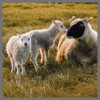
Recent studies have shown that in pre-weaning ruminants, the addition of alfalfa hay is beneficial for growth and rumen development. However, the effect of alfalfa supplementation timing on the growth of pre-weaning lambs remains still unclear.
Read more
-

Sep
26
Interpretive Summary: Comparison of the effects of alfalfa meal and sorghum distillery residue supplementation on the methane emissions in black-feathered Taiwan native chicken
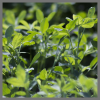
In this study, researchers focused on addressing the crucial issue of global warming by tackling methane (CH4) emissions from chickens, an important source of greenhouse gases. We investigated the impact of adding alfalfa meal and sorghum distillery residues (SDRs) to the diets of Taiwan’s native black-feathered chickens.
Read more
-

Sep
26
Interpretive Summary: Behavioral activity patterns but not hair cortisol concentrations explain steers’ transition-related stress in the first 6 wk in the feedlot
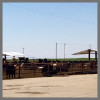
Preconditioning constitutes management practices that help reduce steers’ transition-related stress from a ranch to a feedlot. Auction-derived (AD) steers, generally exposed to various stressors over a short period, are often commingled with preconditioned (PC) steers in feedlots for homogeneity.
Read more
-

Sep
19
Interpretive Summary: Duckweed protein as an alternative plant-based protein source for dog and cat dry diets
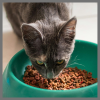
Duckweed, an aquatic plant rich in protein, holds promise as a sustainable plant-based protein for companion animals. However, the potential of duckweed protein in dog and cat diets has been relatively unexplored. In our study, we assessed the viability of incorporating duckweed protein into dog and cat diets by examining nutrient digestibility, stool consistency, and diet palatability.
Read more
-

Sep
19
Interpretive Summary: Effects of betaine supplementation on dry matter intake, milk characteristics, plasma non-esterified fatty acids, and β-hydroxybutyric acid in dairy cattle: a meta-analysis
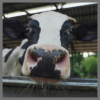
The aim of this meta-analysis was to examine the effects of dietary betaine supplementation on dairy cows’ dry matter intake, milk production, milk composition, non-esterified fatty acids, and β-hydroxybutyric acid. The results indicated that the supplementation of betaine increased dry matter intake, energy-corrected milk, milk fat yield, milk protein yield, and lactose yield.
Read more
-

Sep
19
Interpretive Summary: Sustainable aquaculture practices in South Asia: a comparative analysis of feed formulation and utilization
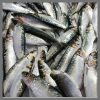
The fisheries and aquaculture sectors are vital in ensuring global food and nutritional security. As per FAO (2022), the global production of aquatic animals was a staggering 178 million tonnes in 2020, with aquaculture contributing a significant 87.5 million tonnes. This means that almost half of the global aquaculture animal production, at 49%, is due to the aquaculture sector.
Read more
-

Sep
19
Interpretive Summary: Glycine nutrition and biochemistry from an aquaculture perspective
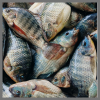
Aquaculture represents the fastest-growing farmed food sector globally, surpassing total capture fisheries at approximately 90 million tons for human consumption (FAO, 2022). However, due to the rapid increase of farmed fish production to meet the protein demands of an increasing world population, marine feedstuffs are now considered finite resources and are transitioning to strategic ingredients in the diets of most carnivorous fish, and are largely omitted in the diets of omnivorous species such as Nile tilapia and channel catfish except in early life stages.
Read more
-

Sep
19
Interpretive Summary: Transforming aquaculture with insect-based feed: restraining factors
a666eb5b-beae-46cd-922e-dfd1f6209242.png?sfvrsn=43c254d1_1)
The first explorations into utilizing insects as a food source due to the foresight of impending food demand occurred in the 1930s, the period between the world wars (Bodenheimer, 1951). By the 1980s, more structured research underscored the tangible advantages of incorporating insect larvae into animal and aquaculture feeds (Newton et al., 1977; Bondari and Sheppard, 1981, 1987).
Read more
-

Sep
19
Interpretive Summary: Testing the waters: the state of U.S. shellfish permitting regulations
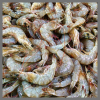
Aquaculture produces roughly half of the seafood consumed worldwide, yet in the United States, the industry remains strikingly limited relative to its potential capacity (Lester et al., 2021). At present, U.S. marine aquaculture (mariculture) consists mostly of small-scale shellfish farming within state waters, with some states boasting well-established shellfish industries and others having entered the industry in earnest only in the last decade.
Read more
-

Sep
18
The Giving Herd - ASAS Foundation Newsletter - September 2024
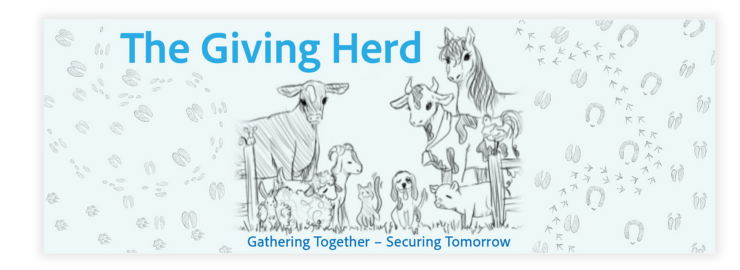
The September Edition of The Giving Herd, an ASAS Foundation Newsletter.
Read more
-

Sep
12
Steve Moeller's Animal Science Journey
Read more
-

Sep
12
Interpretive Summary: Glucose inhibits the inflammatory response in goose fatty liver by increasing the ubiquitination level of PKA
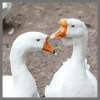
No obvious pathological symptoms such as inflammation were observed in fatty goose liver, suggesting that there is a unique mechanism to inhibit the development of inflammation during the goose fatty liver formation. Previous studies have shown that high glucose activated the ubiquitin–proteasome.
Read more
-

Sep
12
Interpretive Summary: A mutation in POLR2A gene associated with body size traits in Dezhou donkeys revealed with GWAS
.png?sfvrsn=5ecb54d1_1)
Body size is a crucial economic trait in donkeys, as it is closely related to meat and skin production. The aim of this study was to identify the genes and loci associated with body size traits, using the Dezhou donkey as an experimental population. The study findings make contributions to a better understanding on the molecular genetic mechanism of body size traits.
Read more
-

Sep
12
Interpretive Summary: Examining the long-term impacts of ergot alkaloids on fetal heifer development and subsequent growth and reproductive performance
.png?sfvrsn=2ecb54d1_1)
The U.S. livestock industry incurs over one billion dollars of economic loss every year due to fescue toxicosis, caused by consuming ergot alkaloids produced by an endophytic fungus in some grass species. Identifying means to mitigate the negative effects of fescue toxicosis is needed for U.S. beef producers.
Read more
-

Sep
12
Interpretive Summary: Approaches for predicting dairy cattle methane emissions: from traditional methods to machine learning
.png?sfvrsn=fccb54d1_1)
This review provides a comprehensive overview of the different modeling approaches taken in the prediction of dairy cattle methane emissions.
Mechanistic models, which mathematically simulate the methane production process of the dairy cattle rumen, are both accurate and adaptable, yet their necessary input data is difficult to obtain and if imprecise, can produce misinformative results.
Read more
-

Sep
12
Interpretive Summary: Embryo thermal manipulation modifies development and hepatic lipid metabolism in post-hatch layer-type chicks
.png?sfvrsn=d2cb54d1_1)
Incubation temperature is a crucial environmental factor affecting embryonic development and chick quality. The liver is the primary tissue of lipid metabolism in poultry. During incubation, it is responsible for converting yolk fatty acids into forms usable by the embryo. However, it remains unclear whether changes in embryonic incubation temperature can affect liver lipid utilization.
Read more
-

Sep
12
Interpretive Summary: Dietary manganese supplementation decreases hepatic lipid deposition by regulating gene expression and enzyme activity involved in lipid metabolism in the liver of broilers
.png?sfvrsn=a0cb54d1_1)
Dietary manganese supplementation regulates lipid deposition in broiler chickens, with the liver being a significant site of lipid metabolism. This study investigated the effects of different dietary forms of supplemental manganese on hepatic lipid deposition, gene expression, and enzyme activity in the liver fat metabolism of broiler chickens.
Read more
-

Sep
05
Interpretive Summary: Engineering resilient grazing systems to improve adaptation to climate change and helping to mitigate its adverse effects
.png?sfvrsn=bcce54d1_1)
Climate change has increased the frequency of extreme weather events and raised global temperature. Grazing systems need to increase their resilience to adapt to these changes. Enhancing forage species functional diversity and species richness in space and time is an alternative to improve resilience.
Read more
-

Sep
05
Interpretive Summary: Genomic selection in the era of digital phenotyping
.png?sfvrsn=8dce54d1_1)
Promoting sustainable breeding programs requires several measures, including genomic selection and continuous data recording. Digital phenotyping can be used to track animal activity and behavior like feeding and walking time and distress continuously. Coupled with machine learning techniques, any feature of interest can be extracted and used as phenotypes in genomic prediction models.
Read more
 SepWashington Roundup - September 2024
SepWashington Roundup - September 2024.png?sfvrsn=c1d454d1_1) With the fiscal year coming to an end on September 30th, Congress has limited time to pass stopgap legislation to avert a government shutdown. While there is broad recognition that a continuing resolution is needed, there are differing approaches being considered.
With the fiscal year coming to an end on September 30th, Congress has limited time to pass stopgap legislation to avert a government shutdown. While there is broad recognition that a continuing resolution is needed, there are differing approaches being considered. SepInterpretive Summary: Initial timing of alfalfa hay supplementation manipulates blood parameters, rumen gene expression, and epithelial microbiota in pre-weaning lambs
SepInterpretive Summary: Initial timing of alfalfa hay supplementation manipulates blood parameters, rumen gene expression, and epithelial microbiota in pre-weaning lambs Recent studies have shown that in pre-weaning ruminants, the addition of alfalfa hay is beneficial for growth and rumen development. However, the effect of alfalfa supplementation timing on the growth of pre-weaning lambs remains still unclear.
Recent studies have shown that in pre-weaning ruminants, the addition of alfalfa hay is beneficial for growth and rumen development. However, the effect of alfalfa supplementation timing on the growth of pre-weaning lambs remains still unclear. SepInterpretive Summary: Comparison of the effects of alfalfa meal and sorghum distillery residue supplementation on the methane emissions in black-feathered Taiwan native chicken
SepInterpretive Summary: Comparison of the effects of alfalfa meal and sorghum distillery residue supplementation on the methane emissions in black-feathered Taiwan native chicken In this study, researchers focused on addressing the crucial issue of global warming by tackling methane (CH4) emissions from chickens, an important source of greenhouse gases. We investigated the impact of adding alfalfa meal and sorghum distillery residues (SDRs) to the diets of Taiwan’s native black-feathered chickens.
In this study, researchers focused on addressing the crucial issue of global warming by tackling methane (CH4) emissions from chickens, an important source of greenhouse gases. We investigated the impact of adding alfalfa meal and sorghum distillery residues (SDRs) to the diets of Taiwan’s native black-feathered chickens. SepInterpretive Summary: Behavioral activity patterns but not hair cortisol concentrations explain steers’ transition-related stress in the first 6 wk in the feedlot
SepInterpretive Summary: Behavioral activity patterns but not hair cortisol concentrations explain steers’ transition-related stress in the first 6 wk in the feedlot Preconditioning constitutes management practices that help reduce steers’ transition-related stress from a ranch to a feedlot. Auction-derived (AD) steers, generally exposed to various stressors over a short period, are often commingled with preconditioned (PC) steers in feedlots for homogeneity.
Preconditioning constitutes management practices that help reduce steers’ transition-related stress from a ranch to a feedlot. Auction-derived (AD) steers, generally exposed to various stressors over a short period, are often commingled with preconditioned (PC) steers in feedlots for homogeneity. SepInterpretive Summary: Duckweed protein as an alternative plant-based protein source for dog and cat dry diets
SepInterpretive Summary: Duckweed protein as an alternative plant-based protein source for dog and cat dry diets Duckweed, an aquatic plant rich in protein, holds promise as a sustainable plant-based protein for companion animals. However, the potential of duckweed protein in dog and cat diets has been relatively unexplored. In our study, we assessed the viability of incorporating duckweed protein into dog and cat diets by examining nutrient digestibility, stool consistency, and diet palatability.
Duckweed, an aquatic plant rich in protein, holds promise as a sustainable plant-based protein for companion animals. However, the potential of duckweed protein in dog and cat diets has been relatively unexplored. In our study, we assessed the viability of incorporating duckweed protein into dog and cat diets by examining nutrient digestibility, stool consistency, and diet palatability. SepInterpretive Summary: Effects of betaine supplementation on dry matter intake, milk characteristics, plasma non-esterified fatty acids, and β-hydroxybutyric acid in dairy cattle: a meta-analysis
SepInterpretive Summary: Effects of betaine supplementation on dry matter intake, milk characteristics, plasma non-esterified fatty acids, and β-hydroxybutyric acid in dairy cattle: a meta-analysis The aim of this meta-analysis was to examine the effects of dietary betaine supplementation on dairy cows’ dry matter intake, milk production, milk composition, non-esterified fatty acids, and β-hydroxybutyric acid. The results indicated that the supplementation of betaine increased dry matter intake, energy-corrected milk, milk fat yield, milk protein yield, and lactose yield.
The aim of this meta-analysis was to examine the effects of dietary betaine supplementation on dairy cows’ dry matter intake, milk production, milk composition, non-esterified fatty acids, and β-hydroxybutyric acid. The results indicated that the supplementation of betaine increased dry matter intake, energy-corrected milk, milk fat yield, milk protein yield, and lactose yield. SepInterpretive Summary: Sustainable aquaculture practices in South Asia: a comparative analysis of feed formulation and utilization
SepInterpretive Summary: Sustainable aquaculture practices in South Asia: a comparative analysis of feed formulation and utilization The fisheries and aquaculture sectors are vital in ensuring global food and nutritional security. As per FAO (2022), the global production of aquatic animals was a staggering 178 million tonnes in 2020, with aquaculture contributing a significant 87.5 million tonnes. This means that almost half of the global aquaculture animal production, at 49%, is due to the aquaculture sector.
The fisheries and aquaculture sectors are vital in ensuring global food and nutritional security. As per FAO (2022), the global production of aquatic animals was a staggering 178 million tonnes in 2020, with aquaculture contributing a significant 87.5 million tonnes. This means that almost half of the global aquaculture animal production, at 49%, is due to the aquaculture sector. SepInterpretive Summary: Glycine nutrition and biochemistry from an aquaculture perspective
SepInterpretive Summary: Glycine nutrition and biochemistry from an aquaculture perspective Aquaculture represents the fastest-growing farmed food sector globally, surpassing total capture fisheries at approximately 90 million tons for human consumption (FAO, 2022). However, due to the rapid increase of farmed fish production to meet the protein demands of an increasing world population, marine feedstuffs are now considered finite resources and are transitioning to strategic ingredients in the diets of most carnivorous fish, and are largely omitted in the diets of omnivorous species such as Nile tilapia and channel catfish except in early life stages.
Aquaculture represents the fastest-growing farmed food sector globally, surpassing total capture fisheries at approximately 90 million tons for human consumption (FAO, 2022). However, due to the rapid increase of farmed fish production to meet the protein demands of an increasing world population, marine feedstuffs are now considered finite resources and are transitioning to strategic ingredients in the diets of most carnivorous fish, and are largely omitted in the diets of omnivorous species such as Nile tilapia and channel catfish except in early life stages. SepInterpretive Summary: Transforming aquaculture with insect-based feed: restraining factors
SepInterpretive Summary: Transforming aquaculture with insect-based feed: restraining factorsa666eb5b-beae-46cd-922e-dfd1f6209242.png?sfvrsn=43c254d1_1) The first explorations into utilizing insects as a food source due to the foresight of impending food demand occurred in the 1930s, the period between the world wars (Bodenheimer, 1951). By the 1980s, more structured research underscored the tangible advantages of incorporating insect larvae into animal and aquaculture feeds (Newton et al., 1977; Bondari and Sheppard, 1981, 1987).
The first explorations into utilizing insects as a food source due to the foresight of impending food demand occurred in the 1930s, the period between the world wars (Bodenheimer, 1951). By the 1980s, more structured research underscored the tangible advantages of incorporating insect larvae into animal and aquaculture feeds (Newton et al., 1977; Bondari and Sheppard, 1981, 1987). SepInterpretive Summary: Testing the waters: the state of U.S. shellfish permitting regulations
SepInterpretive Summary: Testing the waters: the state of U.S. shellfish permitting regulations Aquaculture produces roughly half of the seafood consumed worldwide, yet in the United States, the industry remains strikingly limited relative to its potential capacity (Lester et al., 2021). At present, U.S. marine aquaculture (mariculture) consists mostly of small-scale shellfish farming within state waters, with some states boasting well-established shellfish industries and others having entered the industry in earnest only in the last decade.
Aquaculture produces roughly half of the seafood consumed worldwide, yet in the United States, the industry remains strikingly limited relative to its potential capacity (Lester et al., 2021). At present, U.S. marine aquaculture (mariculture) consists mostly of small-scale shellfish farming within state waters, with some states boasting well-established shellfish industries and others having entered the industry in earnest only in the last decade. SepThe Giving Herd - ASAS Foundation Newsletter - September 2024
SepThe Giving Herd - ASAS Foundation Newsletter - September 2024 The September Edition of The Giving Herd, an ASAS Foundation Newsletter.
The September Edition of The Giving Herd, an ASAS Foundation Newsletter. SepSteve Moeller's Animal Science Journey
SepSteve Moeller's Animal Science Journey SepInterpretive Summary: Glucose inhibits the inflammatory response in goose fatty liver by increasing the ubiquitination level of PKA
SepInterpretive Summary: Glucose inhibits the inflammatory response in goose fatty liver by increasing the ubiquitination level of PKA No obvious pathological symptoms such as inflammation were observed in fatty goose liver, suggesting that there is a unique mechanism to inhibit the development of inflammation during the goose fatty liver formation. Previous studies have shown that high glucose activated the ubiquitin–proteasome.
No obvious pathological symptoms such as inflammation were observed in fatty goose liver, suggesting that there is a unique mechanism to inhibit the development of inflammation during the goose fatty liver formation. Previous studies have shown that high glucose activated the ubiquitin–proteasome. SepInterpretive Summary: A mutation in POLR2A gene associated with body size traits in Dezhou donkeys revealed with GWAS
SepInterpretive Summary: A mutation in POLR2A gene associated with body size traits in Dezhou donkeys revealed with GWAS.png?sfvrsn=5ecb54d1_1) Body size is a crucial economic trait in donkeys, as it is closely related to meat and skin production. The aim of this study was to identify the genes and loci associated with body size traits, using the Dezhou donkey as an experimental population. The study findings make contributions to a better understanding on the molecular genetic mechanism of body size traits.
Body size is a crucial economic trait in donkeys, as it is closely related to meat and skin production. The aim of this study was to identify the genes and loci associated with body size traits, using the Dezhou donkey as an experimental population. The study findings make contributions to a better understanding on the molecular genetic mechanism of body size traits. SepInterpretive Summary: Examining the long-term impacts of ergot alkaloids on fetal heifer development and subsequent growth and reproductive performance
SepInterpretive Summary: Examining the long-term impacts of ergot alkaloids on fetal heifer development and subsequent growth and reproductive performance.png?sfvrsn=2ecb54d1_1) The U.S. livestock industry incurs over one billion dollars of economic loss every year due to fescue toxicosis, caused by consuming ergot alkaloids produced by an endophytic fungus in some grass species. Identifying means to mitigate the negative effects of fescue toxicosis is needed for U.S. beef producers.
The U.S. livestock industry incurs over one billion dollars of economic loss every year due to fescue toxicosis, caused by consuming ergot alkaloids produced by an endophytic fungus in some grass species. Identifying means to mitigate the negative effects of fescue toxicosis is needed for U.S. beef producers. SepInterpretive Summary: Approaches for predicting dairy cattle methane emissions: from traditional methods to machine learning
SepInterpretive Summary: Approaches for predicting dairy cattle methane emissions: from traditional methods to machine learning.png?sfvrsn=fccb54d1_1) This review provides a comprehensive overview of the different modeling approaches taken in the prediction of dairy cattle methane emissions.
This review provides a comprehensive overview of the different modeling approaches taken in the prediction of dairy cattle methane emissions. SepInterpretive Summary: Embryo thermal manipulation modifies development and hepatic lipid metabolism in post-hatch layer-type chicks
SepInterpretive Summary: Embryo thermal manipulation modifies development and hepatic lipid metabolism in post-hatch layer-type chicks.png?sfvrsn=d2cb54d1_1) Incubation temperature is a crucial environmental factor affecting embryonic development and chick quality. The liver is the primary tissue of lipid metabolism in poultry. During incubation, it is responsible for converting yolk fatty acids into forms usable by the embryo. However, it remains unclear whether changes in embryonic incubation temperature can affect liver lipid utilization.
Incubation temperature is a crucial environmental factor affecting embryonic development and chick quality. The liver is the primary tissue of lipid metabolism in poultry. During incubation, it is responsible for converting yolk fatty acids into forms usable by the embryo. However, it remains unclear whether changes in embryonic incubation temperature can affect liver lipid utilization. SepInterpretive Summary: Dietary manganese supplementation decreases hepatic lipid deposition by regulating gene expression and enzyme activity involved in lipid metabolism in the liver of broilers
SepInterpretive Summary: Dietary manganese supplementation decreases hepatic lipid deposition by regulating gene expression and enzyme activity involved in lipid metabolism in the liver of broilers.png?sfvrsn=a0cb54d1_1) Dietary manganese supplementation regulates lipid deposition in broiler chickens, with the liver being a significant site of lipid metabolism. This study investigated the effects of different dietary forms of supplemental manganese on hepatic lipid deposition, gene expression, and enzyme activity in the liver fat metabolism of broiler chickens.
Dietary manganese supplementation regulates lipid deposition in broiler chickens, with the liver being a significant site of lipid metabolism. This study investigated the effects of different dietary forms of supplemental manganese on hepatic lipid deposition, gene expression, and enzyme activity in the liver fat metabolism of broiler chickens. SepInterpretive Summary: Engineering resilient grazing systems to improve adaptation to climate change and helping to mitigate its adverse effects
SepInterpretive Summary: Engineering resilient grazing systems to improve adaptation to climate change and helping to mitigate its adverse effects.png?sfvrsn=bcce54d1_1) Climate change has increased the frequency of extreme weather events and raised global temperature. Grazing systems need to increase their resilience to adapt to these changes. Enhancing forage species functional diversity and species richness in space and time is an alternative to improve resilience.
Climate change has increased the frequency of extreme weather events and raised global temperature. Grazing systems need to increase their resilience to adapt to these changes. Enhancing forage species functional diversity and species richness in space and time is an alternative to improve resilience. SepInterpretive Summary: Genomic selection in the era of digital phenotyping
SepInterpretive Summary: Genomic selection in the era of digital phenotyping.png?sfvrsn=8dce54d1_1) Promoting sustainable breeding programs requires several measures, including genomic selection and continuous data recording. Digital phenotyping can be used to track animal activity and behavior like feeding and walking time and distress continuously. Coupled with machine learning techniques, any feature of interest can be extracted and used as phenotypes in genomic prediction models.
Promoting sustainable breeding programs requires several measures, including genomic selection and continuous data recording. Digital phenotyping can be used to track animal activity and behavior like feeding and walking time and distress continuously. Coupled with machine learning techniques, any feature of interest can be extracted and used as phenotypes in genomic prediction models.



